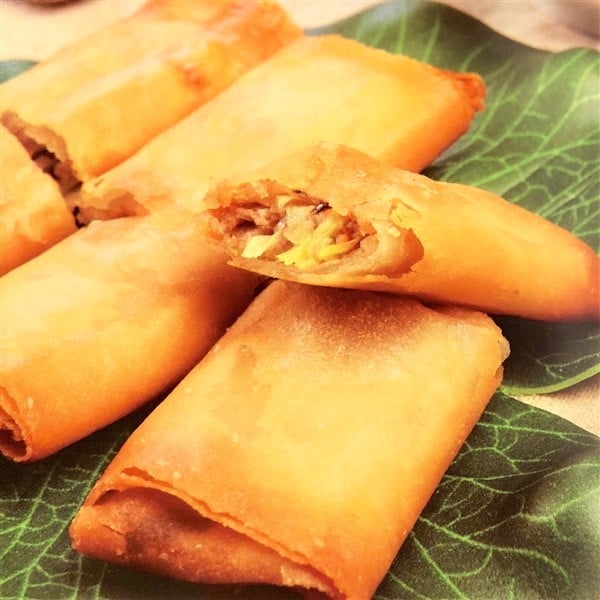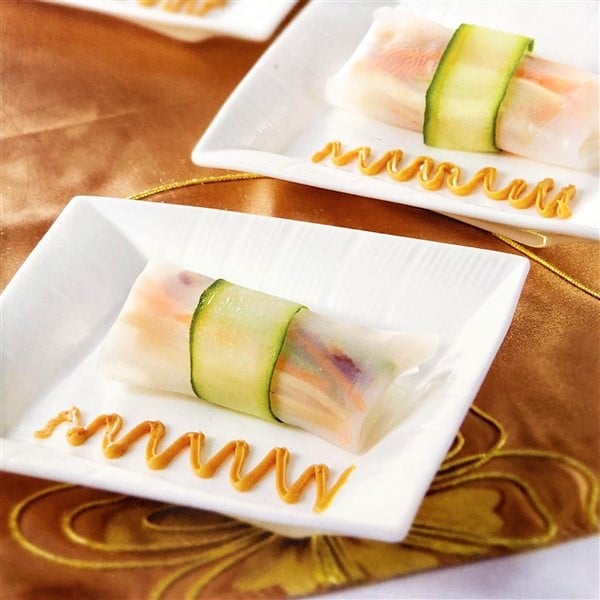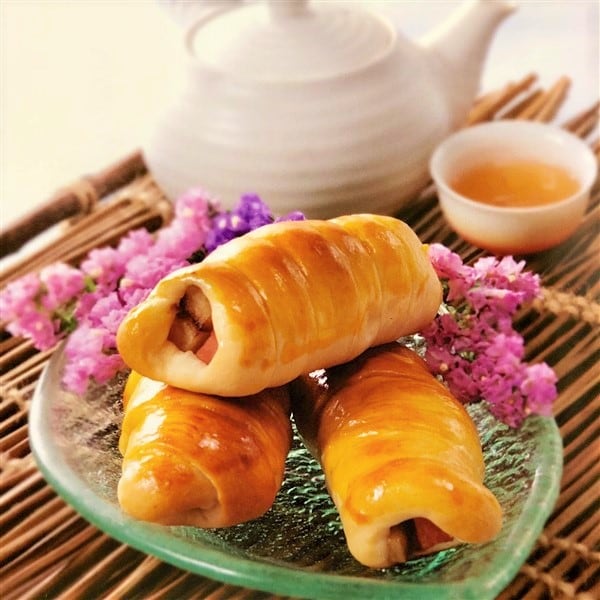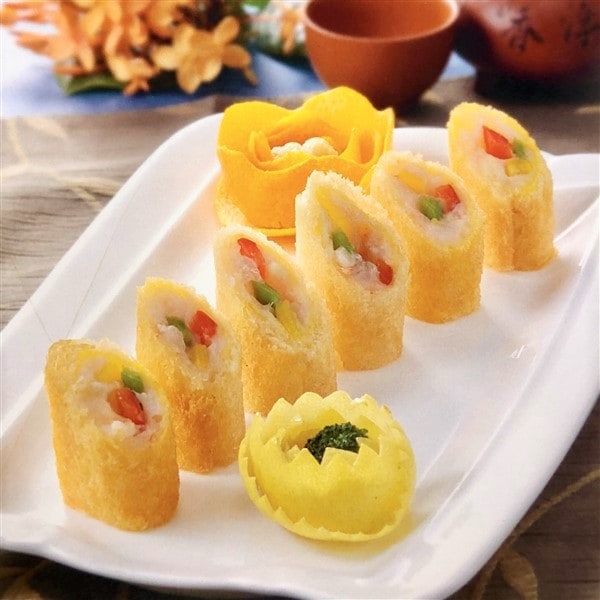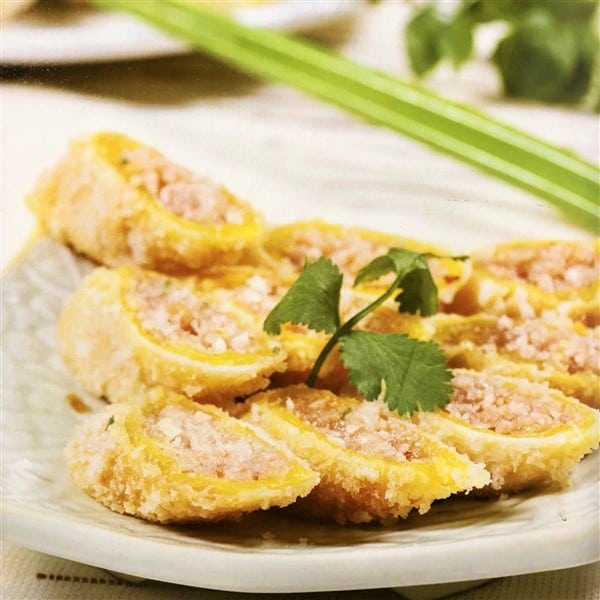Rolls
The richness and variety of Cantonese dim sum is sometimes too much to take in. And there is nothing quite as mesmerizing as the sight of a master dim sum chef pulling steaming-hot dim sum rolls out of the steam basket like magic. Chinese dim sum culture must be passed on if they are to flourish. Here, you’ll find detailed recipes and step-by-step instructions for making all kinds of Cantonese rolls, including spring rolls, cheung fun, and yuba wraps. It will be just like having a master chef by your side guiding you through the process of creating Cantonese dim sum.
Rolls, such as cheung fun, are a variety of traditional snacks of the Han ethnic group originating in Guangdong province. As early as the late Qing dynasty, one could see vendors selling cheung fun and spring rolls all along the streets of Guangzhou. At that time, rolls were divided into two varieties: sweet and savory. The filling of savory rolls primarily used ingredients like pork, beef, shrimp, and pork liver. Sweet roll fillings, however, mainly consisted of candied fruits and vegetables covered in roasted sesame.
All About Dim Sum Rolls
Dim sum rolls is a famous dish of Guangzhou city in Guangdong province, which belongs to the Cantonese regional cuisine. Pinghu millet is used to make the rice flour skin, then filling is added and a thick liquid made by stirring leavening and flour together is applied before being fried in oil. The result is a product crispier and fresher than normal rolls. Spring rolls are the best known example of this preparation method.
Cheung fun, also known as rice noodle rolls or even pig intestine roll (due to its resemblance to the small intestine of a pig), was created at the Pantang Hexian restaurant during the Second Sino-Japanese War. Today it can be found at all kinds of dim sum houses or restaurants. To make cheung fun, rice milk is steamed in specially made, multi-layered steam baskets and steamed into thin sheets. Meat, fish, shrimp, and other ingredients are then placed on top separately, whereupon it is then steamed into a long roll, cut up, and served. According to its filling, the cheung fun may be known as beef cheung fun, pork cheung fun, or shrimp cheung fun. Cheung fun without any filling is called plain cheung fun. With sugar added to the rice milk, the finished dish is called sweet cheung fun. Over the years, many innovations in the preparation of cheung fen have been developed, such as roast duck cheung fun (aka shredded BBQ duck rolls), crispy cheung fun (aka crunchy rice rolls), and more.

Transformation of Dim Sum Houses
The tradition of yum cha (tea) began in the Qing dynasty during the reign of the Tongzhi Emperor. At that time, many small tea houses started opening up in simple, roadside shops in the Guangdong region, providing low-priced tea and dim sum to passersby. Nearby peddlers and servants would frequent these tea houses where for just two li (1⁄1000 of a yuan banknote) they could purchase a hot meal. Thus, these establishments came to be known as “two-li restaurants”. The tea at these restaurants was crude, and the dim sum served was mainly sponge cake, put chai ko, char siu bao , and other kinds of filling snacks. Later, by the reign of the Guangxu emperor, more spacious and accommodating tea houses began appearing. As the Guangdong area continued to prosper, these dim sum restaurants also grew into grand, opulent tea houses where officials and wealthy merchants would discuss business together. Generally, the price and quality of the dishes increased the higher up in the tea house one’s table sat. Even today in Guangzhou some tea houses continue this tradition of having higher-priced dishes on the upper floors.


